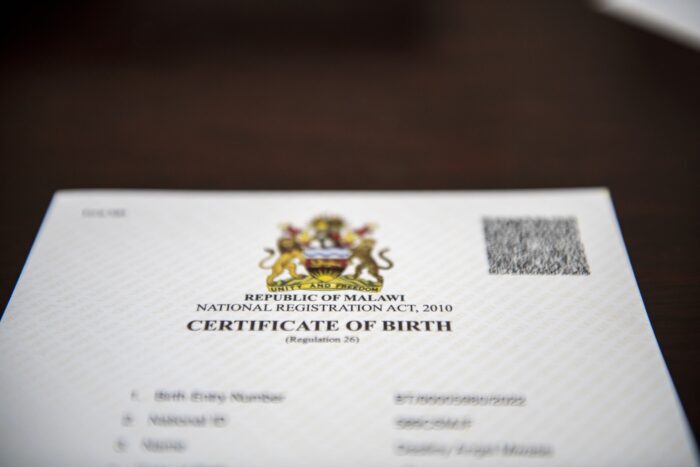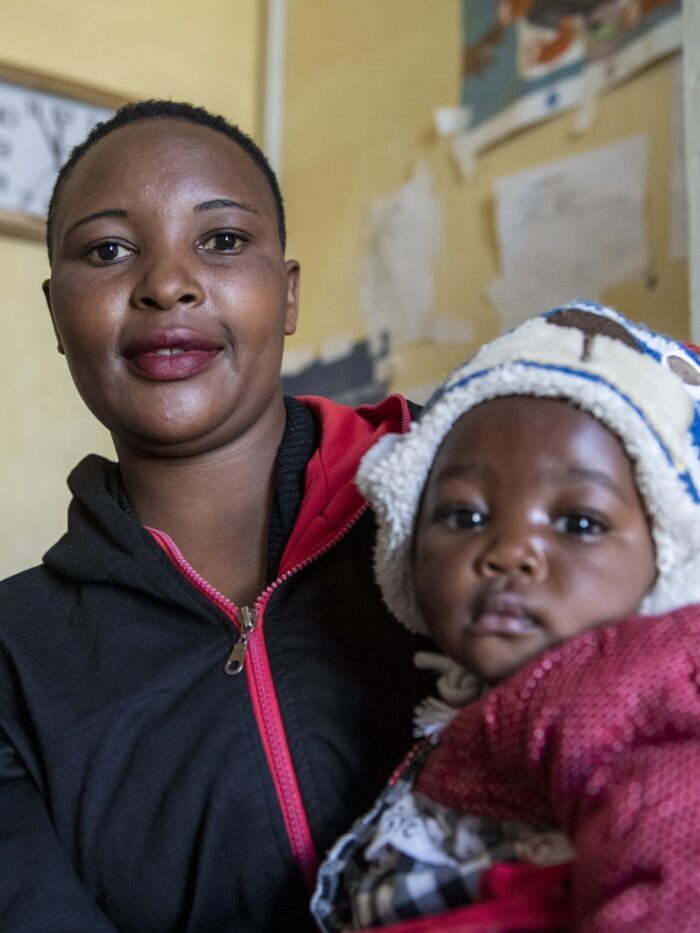A health information system provides many benefits for citizens and their government—for instance, helping to implement a uniform process for recording births or deaths.
This provides the government with valuable information for decision-making about education, health, and other national issues. It enters children into a system that can then track them throughout their lifetimes. And it helps track trends regarding such things as causes of death.

In 2010, the government of Malawi established in the Registration Act, mandating national identification cards and a National Registration Bureau. By 2020, some infrastructure was in place, but it was not reaching all the residents of Malawi.
EGPAF inherited a birth and death registration system that was not integrated to the National ID system and, further, an architecture that was decentralized. EGPAF took on the challenge of reviewing the architecture and then consolidating it. Registration data was being stored on multiple servers across 28 districts. EGPAF recommended centralizing it, similar to the HIS data lake. EGPAF recommended centralizing it, similar to the HIS data lake.
And as EGPAF rolled out the HIS system, it also helped install the software for electronic birth and death registration.
“On the birth certificate, we capture the name of the child, the date of birth, the gender of the child, the birth weight of the child, whether the child was born single or it was twins or triplets, the health facility which the child was born at, and the parents’ details,” says Annika Myango, registration officer at the National Registration Bureau.
Beyond logging a child into the national record, a birth certificate is crucial because “it can be used as proof that the person is indeed a child or not,” says Myango. “It means that if a child is being trafficked to, say, Mozambique, he cannot pass through the border without producing a document. You can know if the person has reached the age of marriage or issues of child labor.”

“When a baby is born, an ID number is generated for that child,” says Emmanuel Mkambankhani, Central Registration & Vital Statistics team lead. “This is the same ID number that will be on the card that will be printed when the child reaches the age of 16.”
“On the other side, when someone presents the ID of a deceased person, the system is able to notify the system to freeze that record. Aside from providing information to the health system, such as cause of death, this protects assets such as bank account and benefits.”
Myango explains that a death certificate can be helpful in dealing with such matters as inheritance and removing individuals from employment and pension rolls.
Registration also allows for birth and death surveillance to track causes of mortality or birth defects supporting the health care of the population.
As far as HIV is concerned, the national registration helps capture statistical information about the number of babies born with HIV. This makes it easier for clinicians to then track the health of children and strategize closing the gap until no child is born with HIV.
Bringing the Systems Together

Mkambankhani says that at this moment, the birth and death registry and the EMRS function independently, but his team is looking at how to integrate them.
“We should be able to track the whole patient cascade, from birth until death,” says Mkambankhani. “Having a unique identify would allow the patient to be able to move across facilities and be known as the same person, helping to understand the history of the patient.”
The new HIS system accomplishes this now through a barcode, but integration with the National ID System would be another step forward.
As of June 2024, the upgraded, centralized Civil Registration and Vital Statistics System (CRVS) is operational in 28 district registration offices, 28 district hospitals, and three central hospitals. Electronic birth and death registration software is installed at 173 sites, with more coming online every month.
“Previously it would take maybe two weeks, three weeks, even several months to process birth certificates,” says Mkambankhani. “They would be sent out to facilities, with the hope that the mother would come in to retrieve it. There might be a huge pile of birth certificates gathering dust.”
The new system is fully integrated with Malawi’s National ID System and has reduced the turnaround time for printing certificates to within five minutes at the facility.
This means that mothers can collect their children’s birth certificates upon discharge from the maternity ward and proudly display it at home and have it available throughout the child’s life.




